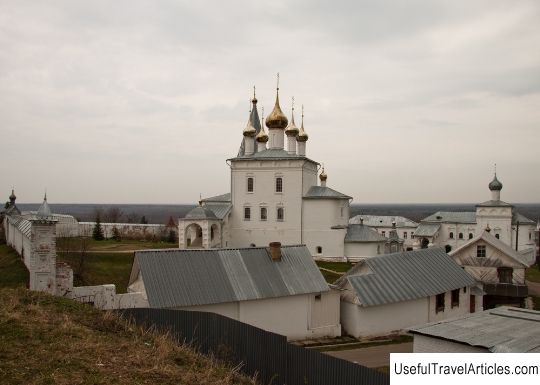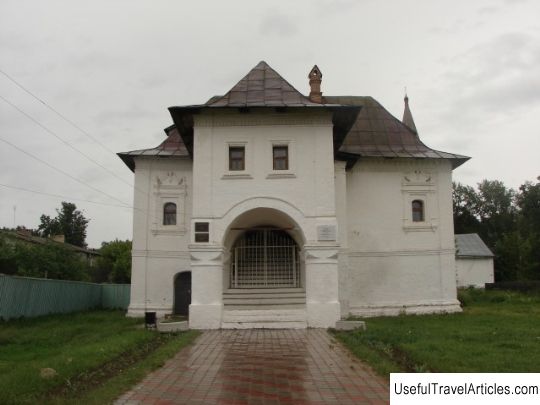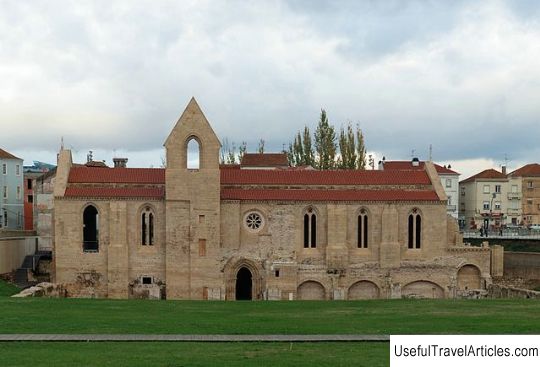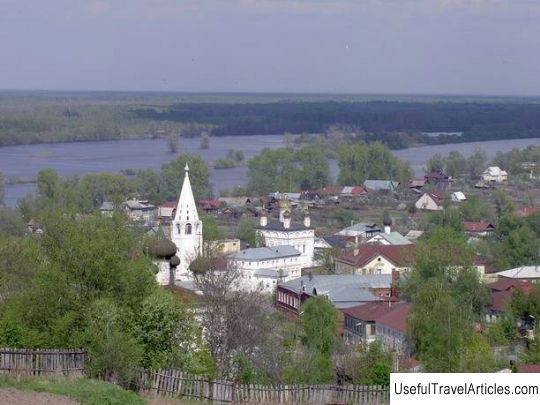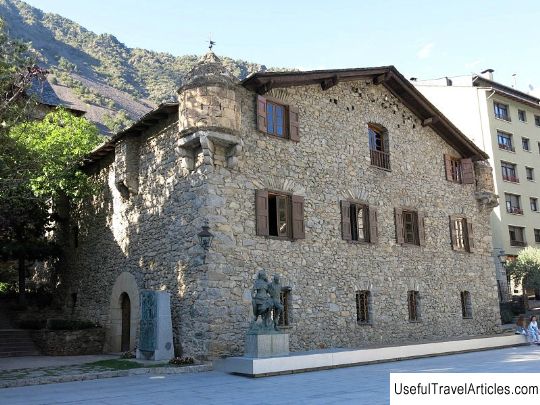Holy Sign Monastery description and photos - Russia - Golden Ring: Gorokhovets
Rating: 8,5/10 (2343 votes) 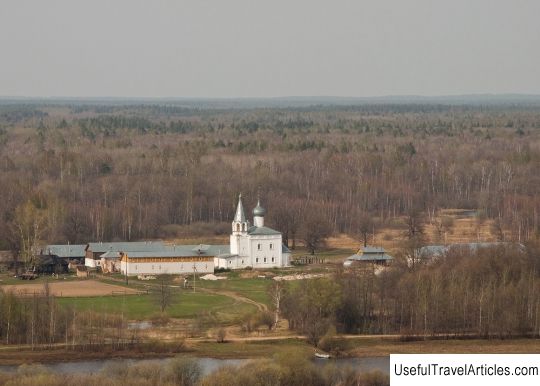
Svyato-Znamensky monastery description and photos - Russia - Golden Ring: Gorokhovets. Detailed information about the attraction. Description, photos and a map showing the nearest significant objects. Photo and descriptionThe Holy Znamensky Monastery on the Red Griva in the town of Gorokhovets was founded as a men's monastery, most likely in 1598. Until now, the question of the exact date of the foundation of the monastery remains controversial. Sources dating from the post-revolutionary period say that the monastery was founded in 1669 by the Gorokhovets merchant S.N. Ershov was allowed to build a new church in honor of the Sign of the Virgin. In the local history works of the 20th century, the year of foundation of the monastery is considered 1597-1598. In the city scribal book in the records of 1687 it is noted that a monastery was built in Gorokhovets beyond the Klyazma in 1706. Among the organizers of this monastery, the scribal book names the merchant Pyotr Lopukhin, the townspeople and the inhabitants of Gorokhovets. At first, all the buildings were wooden, and only in the 17-18th centuries they began to erect stone buildings. The stone Church of the Sign was built at the expense of the merchant S. Ershov. Semyon Ershov gave a gradual letter to the peasants in the monastery, laid the traditions of beekeeping and beekeeping. In 1678, Patriarch Joachim gave his blessing for the construction of a warm wooden church in the monastery in honor of the apostles Peter and Paul at the request of the builder of the monastery Joseph. The temple was built in 1685. But it did not last long. In the inventory of 1723, this temple is no longer mentioned. The wooden Church of the Sign did not last long. According to the inventory of 1723, the temple at this time was already made of stone, but the date of its construction is unknown. The Church of the Sign of the Mother of God is the first stone building of the Gorokhovets district. The monastery lived on subsistence farming and alms. But his independent life did not last long. In 1723, Peter I issued a decree according to which the Znamensky Monastery was assigned to the Holy Dormition Florischeva Hermitage. By this time, there were two stone churches in the monastery: in honor of John the Theologian and Znamenskaya. The monastery also had a wooden fence with a bell tower over the holy gates, above it there were 6 bells and a number of outbuildings. There were a lot of liturgical utensils in the monastery: vestments, icons, books. The decree of Peter I was implemented only in 1749 and the Znamensky Monastery finally became a courtyard of the Florischeva Hermitage, completely switching over to its maintenance, and was used mainly during the arrival of the brethren in Gorokhovets. By the end of the 18th century, the ensemble of the monastery acquired its modern look. A two-story cell building was arranged here, its foundation was stone, and the second floor was wooden. The monastery was surrounded by a fence 33 sazhens long and 4 sazhens wide. In the period from 1753 to 1762, a tent-roofed stone bell tower was added to the Znamensky temple from the west. The building of the Church of the Most Holy Theotokos was a two-height pillarless quadrangle, with a three-part apse reaching up to the middle of the main volume. The quadruple was decorated with pilasters at the corners, decorative cornices made of crackers and semicircular kokoshniks along the upper part of the walls. To the main church from the north was adjoined by a chapel in honor of John the Theologian with an onion dome. The windows of the apse, quadrangle and side-chapel were decorated with platbands in the form of columns with torn triangular pediments. A refectory was attached to the chapel from the north-west, which turned into a covered porch, in turn to which the sacristy was adjoined. In the 19th century, nothing more monumental was erected in the monastery. Only at the end of the century, during the leadership of Archimandrite Anthony's Florishcheva Hermitage, several new residential and utility premises were built to replace the dilapidated ones, the interior of the church was renewed. In 1899, the monastery underwent serious restoration. The stone bell tower was repaired and covered with galvanized sheet iron; renovated all the roofs of the temple; gilded crosses; restored the paintings and frescoes of the choir. Especially valuable from an artistic point of view are items of church decoration (ancient icons); painted royal gates of the 17th century; wooden candlesticks in the form of an hourglass, mica windows. In Soviet times, the monastery fell into disrepair. In 1923, together with the Florischeva Hermitage, the Znamenskoye Compound was liquidated. All property was confiscated, and the buildings were transferred to the department of the museum. In the 1920s, the church housed a paper mill and a straw warehouse. The greatest destruction took place in the monastery in the 1960s, when the temple buildings were adapted for state farm warehouses and a cattle yard. At the same time, the stone fence of the monastery was destroyed. In 1994, the monastery was returned to the Vladimir-Suzdal diocese, on June 24 of the same year it was transferred to the Gorokhovets Trinity-Nikolsky monastery as a skete. Reconstruction work began. In 1999 the skete of the Trinity-Nikolsky Monastery was transformed into the Znamensky Women's Monastery. Today the monastery continues to revive, more than 20 nuns live in the monastery. The Znamensky temple has been completely restored, the monastery bell tower and the cell building have also been restored. The abbot building and outbuildings were built.     We also recommend reading Chucuito description and photos - Peru: Puno Topic: Holy Sign Monastery description and photos - Russia - Golden Ring: Gorokhovets. |
